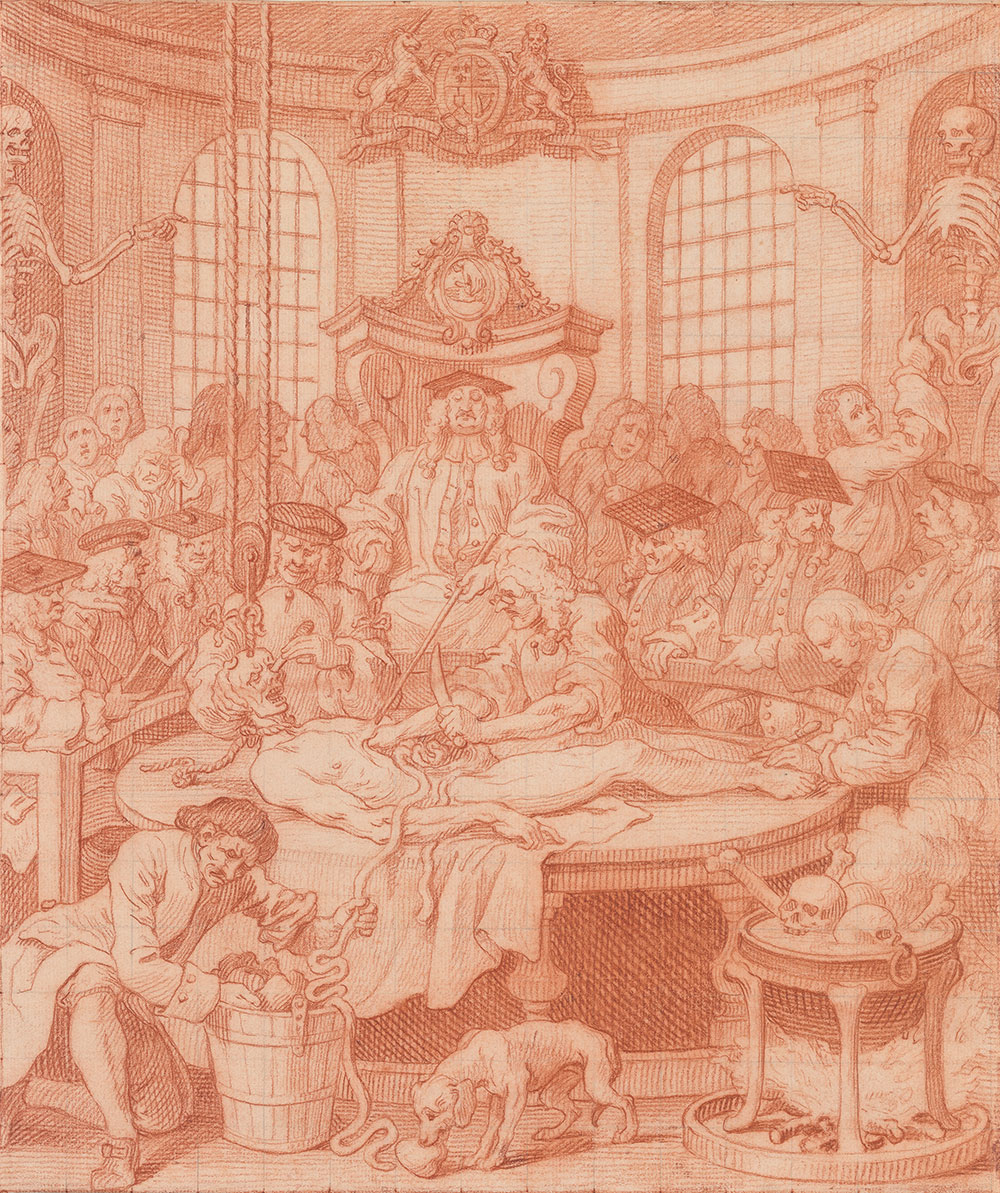
Fresh from the gallows, Nero’s corpse is brought to a medical theater, where it is disemboweled and dissected by three surgeons while a senior faculty member supervises. As one surgeon pierces Nero’s eye socket, another delves into his rib cage to pull out his intestines, which an attendant stuffs into a bucket. In the foreground, a dog licks Nero’s heart in an act of poetic justice. Bones boil in a cauldron at right, indicating that the ultimate fate of Nero’s body is to await reassembly into an anatomical model—a truly fitting end to his career as an abusive miscreant.
William Hogarth (1697–1764)
Fourth Stage of Cruelty (Reward of Cruelty)
1750–51
Red chalk; incised with stylus and squared for transfer in graphite; verso rubbed with red chalk for transfer.
Purchased by Pierpont Morgan (1837–1913) in 1909.
The Morgan Library & Museum, III, 32e.
Jennifer Tonkovich:
The Third Stage of Cruelty depicts Tom Nero being nabbed by a posse of townsman as he stands over the slain body of his pregnant lover. He has cut her deeply in several places, most dramatically across her neck. The inside pocket of his coat reveals a pistol, while the murder weapon, a bloody knife, has been found close at hand.
This and the next scene in which Nero's body is brought from the gallows to the surgical theater to be transformed into an anatomical model, speak directly to contemporary legislation governing the act of murder and the ultimate fate of the murder's body once executed.
The Murder Act of 1751 was intended as a deterrent at such violent crime by increasing the infamy associated with murder. It denied the convicted murder the right to a burial and mandated the body be available for dissection or anatomic purposes, or that the cadaver be hung in chains. This desecration of the body and the rule that executions were to be scheduled no more than two days after sentencing were seen as a means to prevent the escalation of fatal violence.
It was at the same time that Hogarth's friend, the writer and magistrate Henry Fielding, founded the first organized police force called the Bow Street Runners. This marked a concerted effort to control and investigate violent crime and make apprehending criminals a responsibility of the state rather than an onus on private individuals who had often been the victims of crime.
